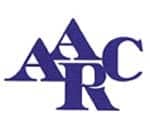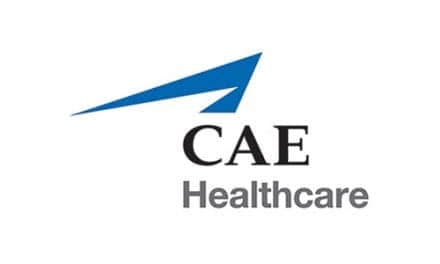Bad handwriting, more than a nuisance, is fraught with potential legal, financial, and clinical complications. Computers and improved communications offer help.
How long are we clinicians to be subjected to the illegible handwriting of physicians? How many times are we asked to decipher orders that appear to be written in something other than English? And how many times must we put up with the frustration and delays caused by the inability to read orders and notations throughout the patient record?
The answer is: As long as they have to put up with it from us.
Incomplete documentation and illegible documentation cause virtually the same problems. Illegible documentation may as well not exist. If no one can read it, what good does it do? The most common reason given for poor or illegible documentation is “I was too busy.” With staffing opportunities a nationwide concern, clinicians need to realize that quality cannot be sacrificed for quantity. Problems associated with illegible documentation are costly and contribute to poor delivery of patient care.
Costs
Illegible documentation can increase the possibility of making errors, including medication errors that could possibly harm the patient. It can cause delays in treatment, while calls are made to sort out the orders, which could also lead to patient harm.
The multidisciplinary patient care process breaks down. RTs, nurses, and other clinicians need to be able to clearly understand each other to provide the highest quality care for our patients. For example, a respiratory therapist delivers a bronchodilator treatment to a patient. After the treatment is complete, there is a 25% increase in the patient’s heart rate, a side effect of the medication. The therapist documents this either illegibly or not at all. The physician cannot read the documentation and does not order alternate medication or therapies. The current medication is continued, and the patient suffers the same side effect after every treatment until it is discovered.
There can be legal ramifications associated with illegible or incomplete documentation. Malpractice suits continue to rise year after year. The cost to health care organizations and clinicians is staggering. Illegible or incomplete documentation is very often the culprit behind these lawsuits. The old saying “If you did not write it down, it was not done” is truer than ever. Clinicians need to make sure that documentation is clear and complete. Do not assume that everyone “knows what you mean.” It is each professional’s responsibility to make sure information is appropriately communicated.
Reimbursement for services is also affected. Most government and insurance agencies require clear, detailed documentation to reimburse health care organizations for most services delivered. For example, pulmonary function tests are billed by each individual component of the test. Basic spirometry, which includes forced vital capacity (FVC), maximum voluntary ventilation (MVV), and slow vital capacity (SVC), is one component. Diffusing lung capacity testing (DLCO), lung volume tests, and maximum inspiratory and expiratory pressures (MIPs and MEPs) are separate components. If any documentation for these separate components is illegible or incomplete, reimbursement could be denied. Inaccurate billing for services could also be considered fraudulent and lead to legal repercussions.
Computers
Many organizations have begun using computerized documentation systems. Documentation is typed into the system, and a computer-generated report of therapies delivered is then made. This report replaces handwritten reports on the patient chart, so everyone should be able to read them. Many of these computerized systems can be customized with required entries. For example, documentation of a treatment can require the user to complete certain sections (heart rate, breath sounds, tolerance, patient reaction) before it will accept the record as completed. The entry fields for each procedure should include documentation that is required for that particular procedure. That should be based on clinical requirements, your policies and procedures, and any governing agencies’ requirements. This will help ensure that your documentation is complete. These information fields are often made up of “canned text” information choices instead of free text. This helps eliminate errors and ensures that the required information is documented.
Many of these computerized documentation systems have a wireless capability. The clinician may perform documentation at the bedside on a small portable device. This information is relayed in real time to the main system and immediately becomes part of the patient electronic record. Physicians and other clinicians can then view this information by accessing the electronic record from any location. Documentation becoming part of the electronic record immediately is especially helpful in the outpatient area. Any corrections or additions that need to be made, or any missing required information, can be reconciled easily before the patient is treated and discharged.
The use of computerized documentation can also help us be more productive and give us more time to care for our patients. It reduces the amount of time spent tracking down information, looking for charts, trying to see how the patient has responded to previous therapies, and searching for information documented by other disciplines. All of this information is at the clinician’s fingertips at the patient’s bedside.
Simple mathematics illustrates the savings. If a clinician has 25 patients to see on a particular day, and he or she spends 2 to 3 minutes per patient looking for their records, as opposed to no minutes because the records are bedside, available with the push of a button, about an hour will be saved in the day—an additional hour to spend with the patients, per shift, per clinician. Would that not help resolve the “I was too busy” problem?
Another benefit is bedside access to policies and procedures. If a therapist on the floor performing a nonroutine procedure suddenly has a question about it, many computerized systems will allow clinicians to have procedure or policy information accessible at the patient’s bedside.
Financial Bottom Lines
Billing for services also can be linked to computerized documentation systems. The computer can recognize individual treatments or procedures that the clinician documents and automatically link them to billing codes. Some systems may use a bar-code scanning technology to link procedures to billing. All of this occurs via electronic interface automatically, and a day’s billing can be performed in minutes. This eliminates both hours compiling a day’s billing manually and most lost charges, as some programs also have inventory control components.
If your organization has not yet moved to computerized documentation systems, make handwriting part of your process improvement review. Make your staff aware of the importance of legible and complete documentation, and educate individual staff members when you find opportunities.
The financial bottom line costs for illegible or incomplete documentation are in the tens of millions of dollars every year. The cost to our patients is a reduction in the quality of care they receive. Take the extra time to write legibly, make sure your documentation is complete, and everyone will be a winner.
 Lyn Tisdale, RRT, is manager of respiratory care at Jackson-Madison County General Hospital in Jackson, Tenn
Lyn Tisdale, RRT, is manager of respiratory care at Jackson-Madison County General Hospital in Jackson, Tenn









